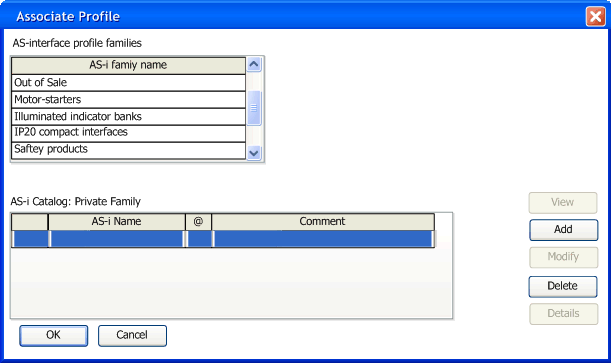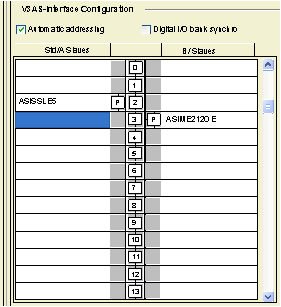|
How to Define a Slave Device on an AS-Interface Bus
|
|
|
Original instructions
|
|
Step
|
Action
|
|---|---|
|
1
|
Access the AS-Interface module hardware configuration screen.
|
|
2
|
In the field AS-Interface V3 configuration either:
Result: The screen Associate Profile appears.
 |
|
3
|
In the field AS-Interface profile families select the required family.
Result: The AS-i catalog associated with the selected family appears.
 Legend for column @:
Note: The following products or families have been removed since It is no longer possible to add the above products. But if an application uses them, these products appear on the configuration screen and operate normally:
|
|
4
|
In the AS-i catalog select the required device.
|
|
5
|
Confirm the selection with OK.
Result: The slave device is defined in its slot, the reference of the connected device appears opposite the number of the slave.
 |
|
6
|
To connect other slave devices on the AS-Interface bus, repeat the procedure from step 2.
|